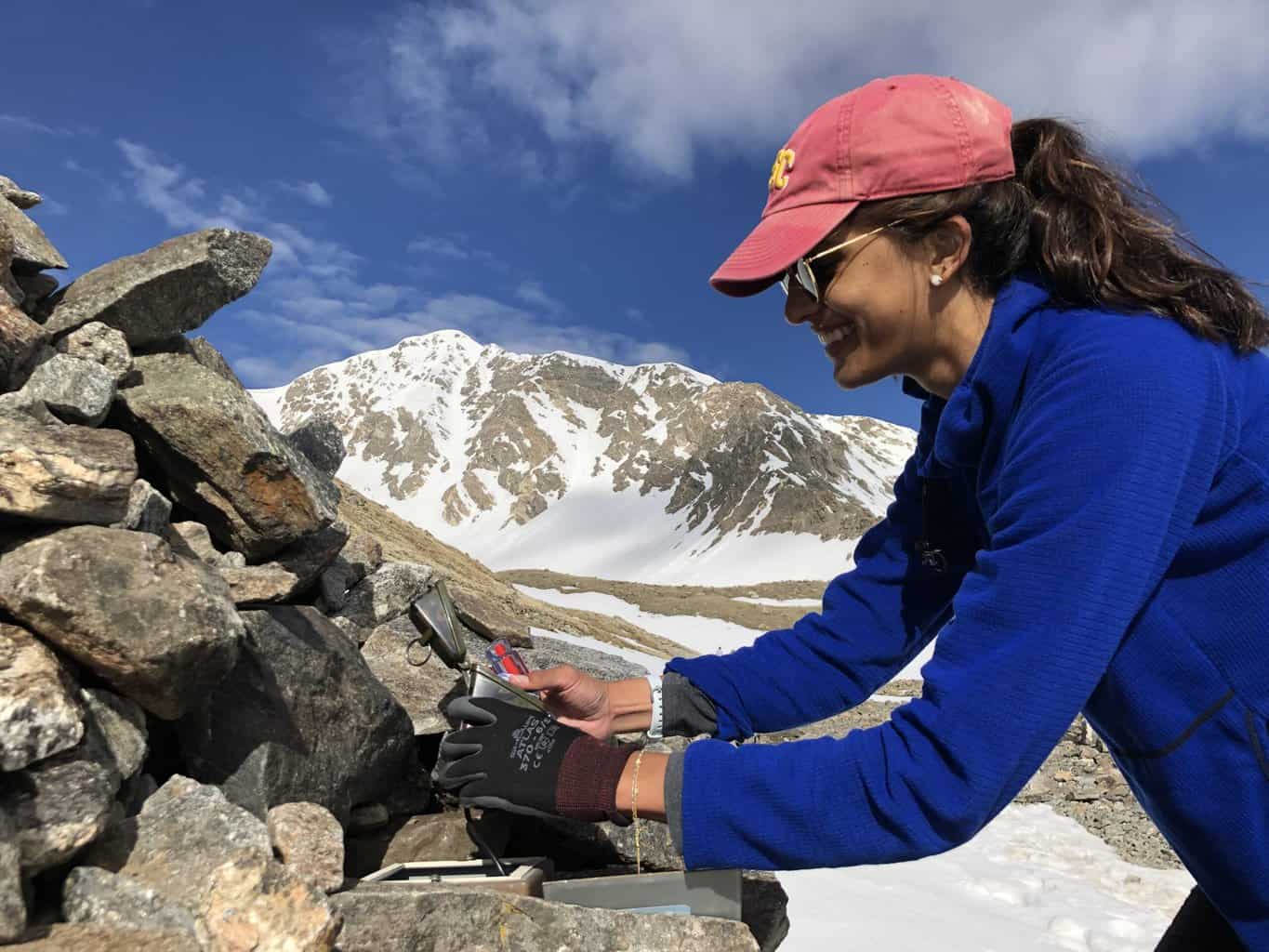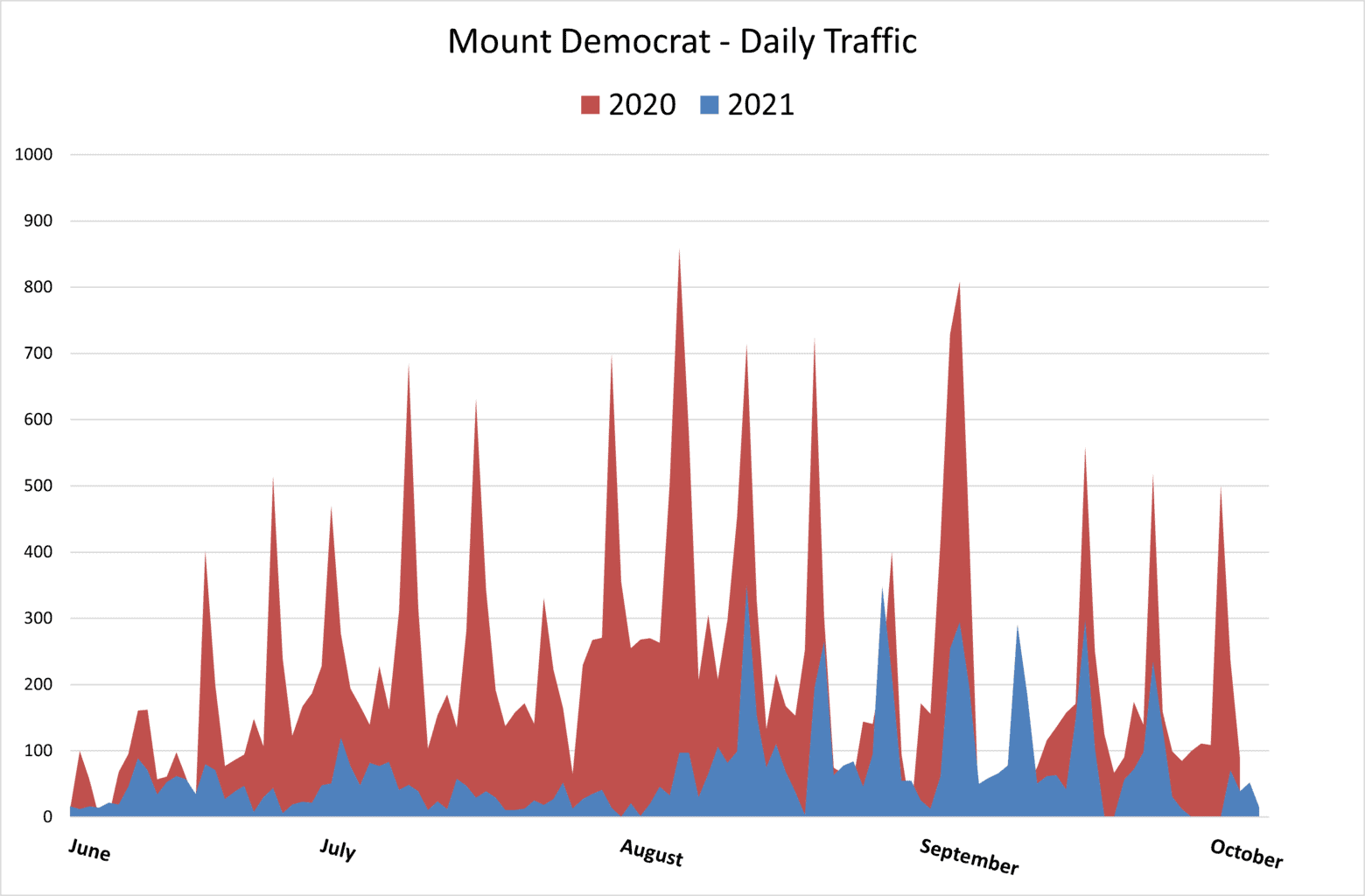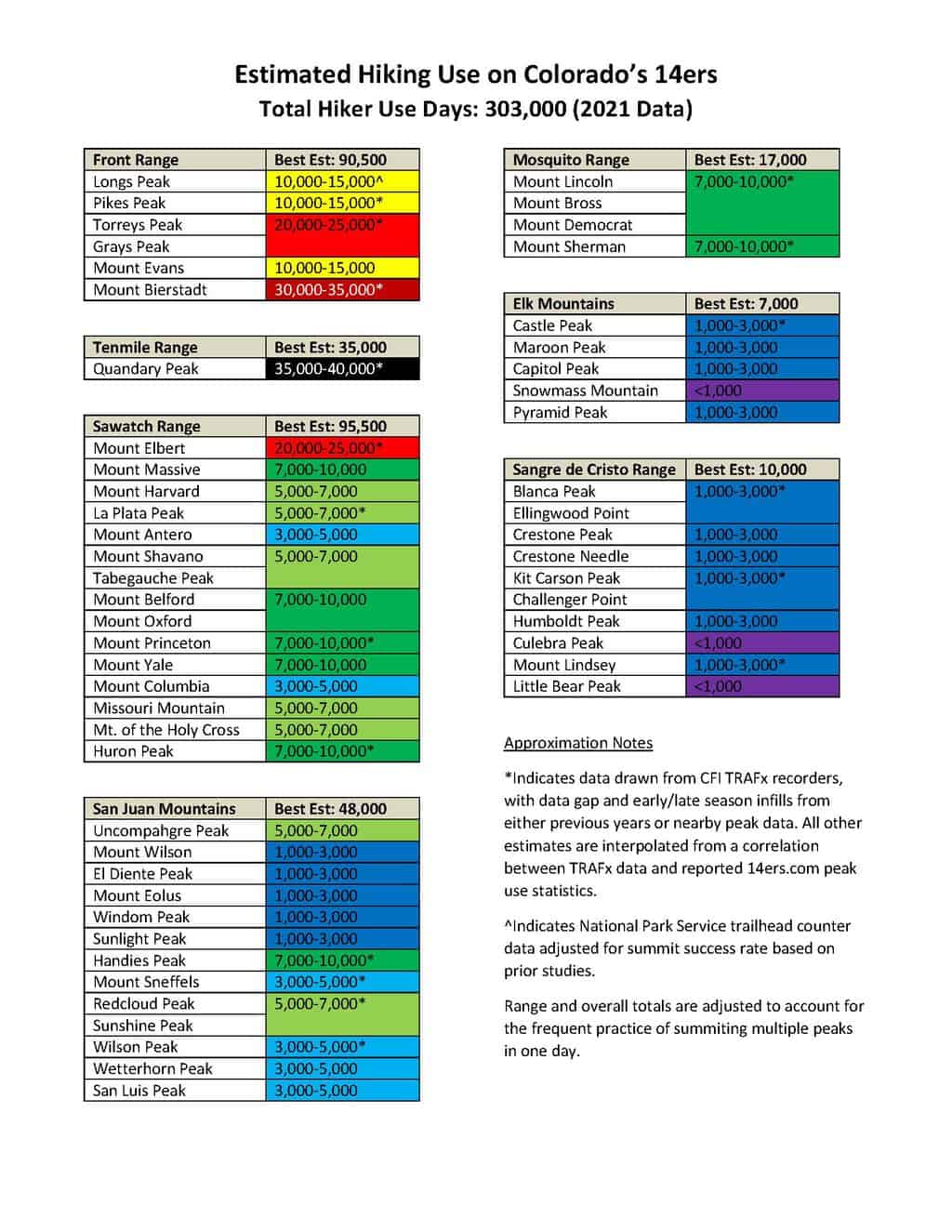Colorado Fourteeners Initiative has been studying hiking use on Colorado’s 14,000-foot peaks – the 14ers – using infrared trail counters since 2014. In 2016, CFI released its first-ever report on Fourteener hiking use and economic impact. This year, after six full seasons with 20+ thermal counters in the field, Colorado Fourteeners Initiative is releasing the latest edition of our report that estimates that the number of people climbing a 14,000-foot peak in Colorado last year fell by 27 percent to 303,000 hiker use days. Access and parking restrictions at several of the state’s most popular 14ers near the Front Range saw an even higher drop. Included was a 65% decline in estimated climbing use in the Mosquito Range that includes the popular Decalibron Loop (Mounts Democrat, Cameron, Lincoln and Bross bypass) that was closed by the private landowner between May 1 and August 6. The statewide economic impact of hiking Colorado 14ers in 2021 was $82.2 million based on past 14er hiking use expenditure studies.

2021 summer intern Farah Stack installs the Grays and Torreys trail counter in early June.
The route showing the greatest decline in hiking use statewide was the “Decalibron Loop” that encompasses Mounts Democrat, Lincoln and Bross. The route was closed from May 1 through August 6 due to landowner liability concerns. (Note: The actual summit of Bross remains closed due to private land issues, but hikers are permitted on a bypass loop route near the summit). The route was the fourth most-popular in 2020 (estimated use of 25,000 to 30,000 hiker days) but fell to an estimated 7,000 to 10,000 days last year. Climbers largely complied with the closure, but use levels did not return to 2020 levels even after the August reopening.

CFI’s most recent hiking use report culminates seven seasons of data collection at up to 23 sites tracking use on up to 21 14er peaks across the state. (There were five counters in 2014, 10 counters in 2015, 20 counters in 2016-2017, 22 counters in 2018-2019, and 23 counters in 2020-2021.) CFI’s hiking use projections are based on the combination of several data sources.
- CFI collected hour-by-hour data during the 2021 hiking season using TRAFx compact infrared trail counters that were placed at 23 locations adjacent to hiking trails servicing 21 Fourteener peaks.
- Hiking use projections for all other 14ers were based on crowdsourced “14er checklists” submitted to the 14ers.com website by more than 21,400 individual hikers. Estimates for peaks without trail counters were calculated using a trend line calculated by the relative frequency of reported hiking use on all peaks using data points as anchors for peaks that had counters in 2021.
In 2020, Matt Albritton, a Yale undergrad studying computer science and engineering, helped further refine CFI’s data modeling program that was originally developed in 2016. Matt cleaned and rewrote the program’s code and created an updated version using Python. The program helps fill in gaps in the data due to obscured counter sensors or periods in the early or late season when the counter is not in place. This model incorporates the week of the season, day of the week, holidays, and similar peaks with data to fill in missing data. See an example below of the predicted vs. measured data for one of the peaks.

CFI uses a multi-factor modeling program to predict hiking use levels when we do not have a counter on a given peak or when there are data gaps. The predicted 2021 use levels on Grays and Torreys trail (red line) largely mirror what was observed by our counter (blue line).
CFI has long been interested in the amount of hiking use these popular peaks receive. Colorado’s 14ers are among the most sought-after mountain peaks in the country. They also possess some of the most fragile alpine landscapes. Hiking use is confined into a very short four-month climbing season when the mountains are largely free of snow. Natural resource impacts in the fragile alpine tundra environment, stemming from the lack of properly designed and constructed summit trails on the 14ers, led to CFI’s founding back in 1994. Our “14er Report Card” released in 2015 showed the need for $24 million to build out and improve the summit trail network. Better understanding hiking use levels, dispersal over the climbing season, and changes over time are important factors in determining the link between hiking use and changing on-the-ground conditions of natural surface summit trails. Special thanks goes out to CFI’s summer CLIMB interns Emily Barnes (2016), Claire Gomba (2017), Nick Dahl (2018), Jackson Burton (2019), Matt Albritton (2020), and Farah Stack (2021) who performed the analysis for these hiking use studies and assisted in placing and downloading trail counters.
Additional Links:
2020 14er Hiking Use Estimates
2019 14er Hiking Use Estimates
2018 14er Hiking Use Estimates

